Tying Math to Process Art
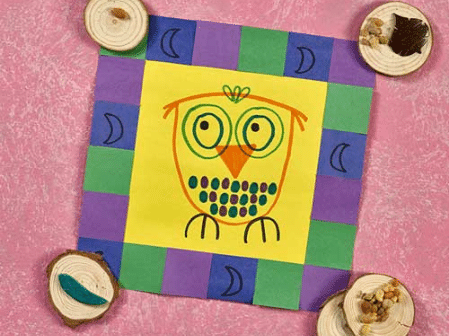
Integrating Math and Process Art
A guide to math art projects - art projects using math!
“Look Teacher! I put the blue ones here and the red ones here!” We looked over at the art project we had set out for the children, including paper, glue, and a variety of different colored and shaped buttons. We noticed that Luna had glued a line of blue buttons and a line of red buttons, in order from smallest to largest. Without even knowing it, she had practiced the math concepts sorting and ordering, while engaging in process art. This experience reminded us that math doesn’t need to be taught separately, it can easily be integrated into art and sensory play activities.
So many different math concepts can be taught when children are creating with art materials, including number sense, 1:1 correspondence, sorting and categorizing, pattern making, spatial awareness, building math vocabulary, and measurement. These skills are important for building a strong math foundation so that children can learn more complicated mathematical principles as they grow and continue their educations.
Examples of Math Art Projects and Activities
1:1 Correspondence and Number Sense
Basic number sense (counting, understanding more and less) and 1:1 correspondence (being able to count items one by one) are concepts upon which later math skills are built. When children created this Loose Parts Pizza (pictured below), we observed them counting the buttons, rocks, and pieces of yarn cheese as they added the pizza toppings. Creating open ended art was our main goal, but as we planned this activity, we knew that children would also engage in many different types of learning.
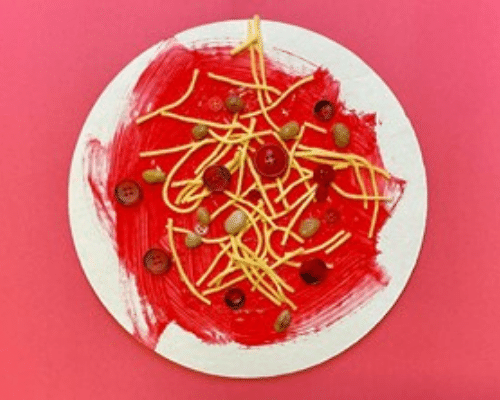
Sorting and Categorizing
Below you’ll see a photo of a sensory play activity that we set up for the children. We offered a variety of sizes and colors of pom poms, several different shapes of mini erasers, tongs and a tray for sorting. With this project the children were engaging in sensory play, but they were also practicing and building their sorting and categorizing skills. We observed children using their fine motor skills to grasp and squeeze the tweezers as they manipulated the pom poms. As they chatted with each other and their teachers, working on those language skills, children naturally began organizing the materials. They noticed differences in color, design, shape, and size and placed like items together in the tray’s compartments.
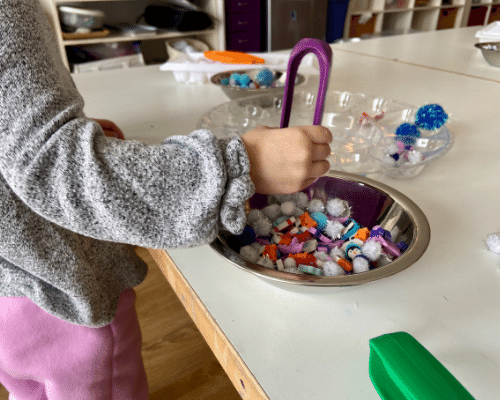
Pattern Making
One day we set out bowls of beads and chenille craft stems for children to explore. Without prompting from the teachers, children began adding beads to the stems. Some added them randomly, but many began creating simple patterns: ABAB, ABBA, or AABAA. Children notice patterns they see around them and naturally begin creating patterns of their own. This important math skill is critical for building later math concepts.
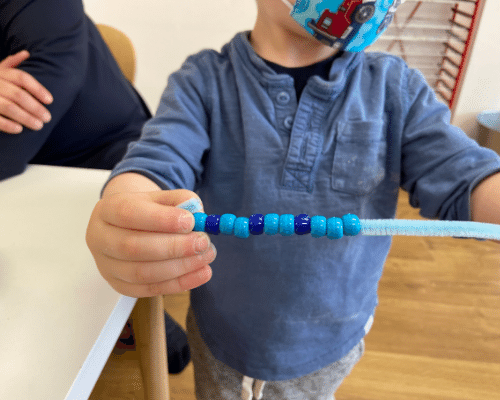
And pictured here is a Quilt Making activity where children can use colored squares of paper to create patterns and quilt-like designs. This can also tie in literacy, as children can use these quilts as illustrations for stories they may retell or create on their own.
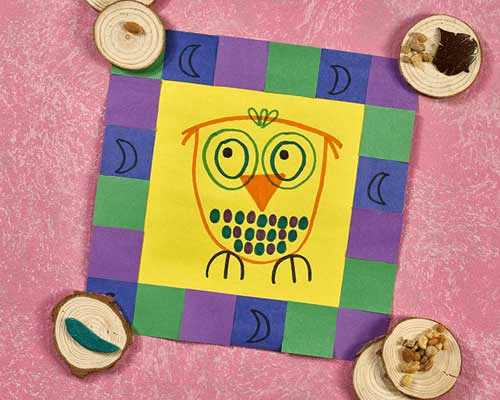
Building Math Vocabulary
Tape Art is a fun way to teach children about geometry and naming geometric shapes. Children can use tape placed on a canvas or piece of thick paper. The negative space that is made when the craft tape is lifted off will show the created shapes clearly. In the example pictured, we created mostly triangles and rhombuses, but any shapes can be made. Try challenging students to make squares, stars, or even hearts!
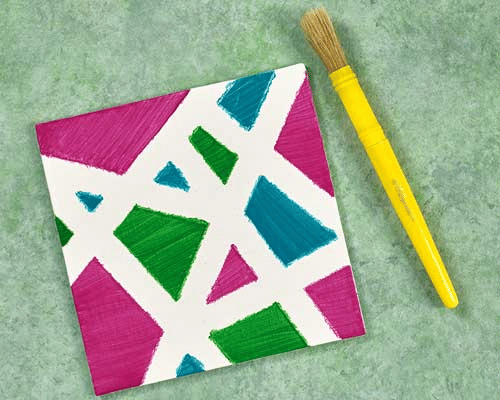
Measurement
When placing out ribbons and scissors, we didn’t originally intend to introduce measurement. However, after cutting different lengths of ribbon, children spontaneously began using their cut ribbon pieces to measure. They measured pieces against each other and laid them out on the contact paper covering the table, to see which pieces were longer and shorter. Some children took their pieces and began comparing the lengths of their ribbons to their arm and hand lengths, and one child even measured the legs of his chair! It was so exciting to see this impromptu learning!
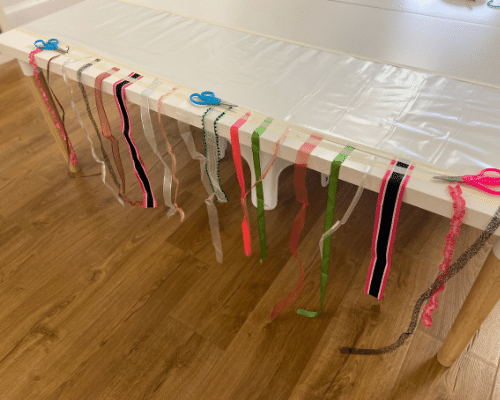
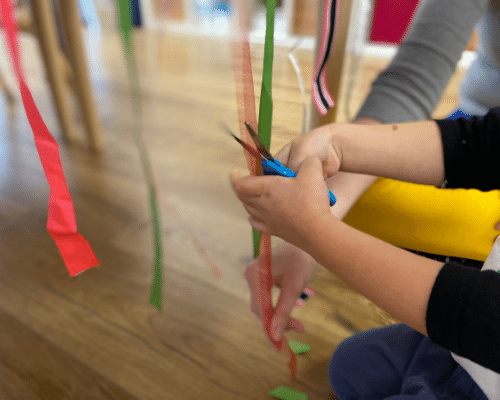
Math doesn’t need to be its own lesson in your classroom. When planning different art projects, sensory play activities, and even pretend play, children gain so many early math skills. Play is the work of children and they naturally and spontaneously engage in math as they are playing, learning, and creating. The next time you plan an art or sensory activity for your children, try writing down the skills you see them gaining as they explore! Don't be afraid to introduce math art projects - teaching math through art can be fun!
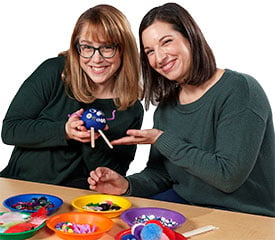
With over 30 years of combined teaching experience between them, early childhood educators Nicole Werther and Rachel Miller know just how to keep your young children engaged—let them take the lead! Their small business, Backyartists, encourages creative thinking and discovery through the magic of process art and sensory play.
Rachel and Nicole are Becker's Creative Arts Content Advisors and have used their knowledge of process art to create resources, such as blog posts and activity ideas, to inspire teachers and parents when planning projects with the Artful Goods materials.
They also offer playgroups and classes in the Boston area. Check out Backyartists.com for the most up to date offerings.
